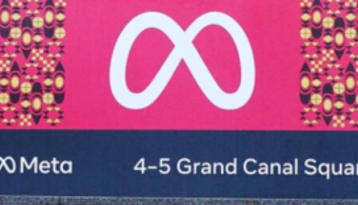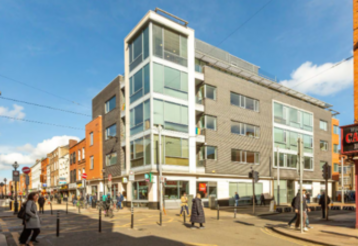Members
FICC Member Follow the Camino trained Dublin group for a 25km walk from Grand Canal Dock to Bray beach for Pieta House

Dock to seaside against suicide
A walking group from all over Dublin took on challenge of walking from the city center to Wicklow to raise funds for Pieta House. The group of almost 40 strangers met up for the first time on Saturday morning when they showed up at the meeting point in the city. The event was organized by Follow The Camino a walking holiday specialist who arrange tours along the Camino de Santiago. Many of the walkers either have walked the famous pilgrimage or are considering it so used the event as a Camino training day as the distance walked is the equivalent to an average day’s walking along the Camino.
Reasons for taking on the challenged varied for person to person. Some just for fun or fitness, some for the social aspect and some for very personal reasons. One lady named Joanne said she “had lost a friend to suicide every step was in honor of her pal.”
A great day was had all round regardless of the reason and a spokesperson from Follow the Camino.com says “The Camino de Santiago is no just a religious pilgrimage but a very spiritual experience. Many people find that once the complete the endurance walk they grow emotionally, over-come some burden or even find their zen.”
These walking day’s out will now be taking place every month and are hoping to get bigger every month so all are welcome to join in. Keep an eye on the website (followthecamino.com) for details of August’s event.
A history of the pilgrimage
The discovery of the remains of Saint James, the Apostle at the beginning of the IX century, marked the beginning of the pilgrimages to Compostela, creating the Way of St. James.
King Alphonso II, the Chaste, ordered the construction of a small church on the site of the discovery and the news spread among the community of believers and the Christian kingdoms of the western world. This was the start of the pilgrimages and the worship of St. James.
The wave of followers increased day by day. This current led to religious, cultural and economic ties that have woven a network based on the pilgrimage, deeply spiritual in nature, which is renowned for the cultural heritage it has brought to the west.
The first pilgrims arrived in the budding metropolis of Santiago. The Way of St. James, also known as the Way of the Stars, was beginning to take shape, becoming firmly rooted in the 12th and 13th centuries with the granting of spiritual indulgences. These indulgences reached a high point during the so-called Holy Years of Santiago de Compostela.
The Way in Europe
The Way of St. James gave rise to an extraordinary amount of animated activity over the centuries. The first major network of assistance arose out of the Way and it provided the setting for the creation of cathedrals, monasteries, towns and cities.
Europe was shaped by the pilgrimages made to Santiago de Compostela...
The Way provided the opportunity for encounters, leading to a culture based on exchange, personal relationships and an economic boom that brought about the development of vast areas, which had been unpopulated up until that time.
So, the Way of St. James has become today the primary European cultural itinerary as, according to the explanation of a number of authors from the old continent, “Europe was shaped by the pilgrimages made to Santiago de Compostela” (Goethe).
The Holy Years
The Holy year of Santiago de Compostela supposedly dates from a grant made by Pope Calixto II, in 1122. This was confirmed by other pontiffs. The papal bull Regis Aeterni, of Alexander lll, ratified and perpetuated the privilege of the Jubilee, plenary indulgence, or Holy Years awarded to the Church of Santiago.
The first celebration of a Holy Year possibly dates back to 1182 and it was in the 15th century when the grand years of indulgence took place, as occur at the present time.
The Holy Year is when the 25th of July, the feast of the martyrdom of St. James falls on a Sunday. In this way the Jubilee of Santiago de Compostela occurs every 6, 5, 6 and 11 years. This irregular pattern is due to the leap years, which alter the logical annual order.
A pilgrim may achieve indulgence starting from January 1st until December 31st provided that he or she fulfils certain religious rites. However, there is another way of achieving plenary indulgence, which is to enter the church of Santiago de Villafrance (Leon) by the Puerta del Perdón.



